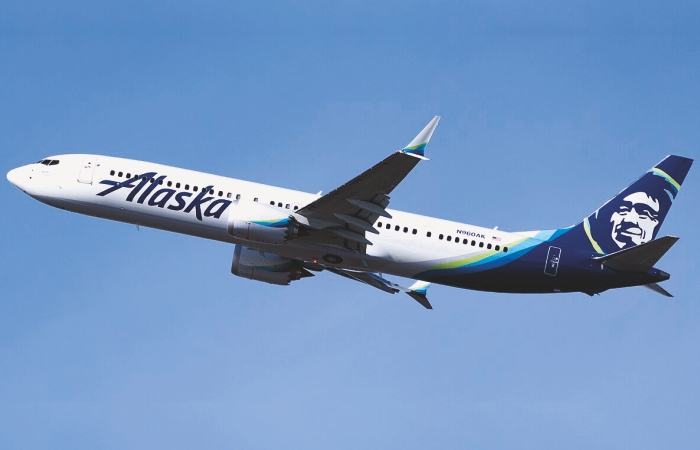The 737 MAX is back in headlines, and again for the wrong reasons. The new conversations began after the loss of a door plug section on an Alaska Airlines 737-9 flight on 5 January 2024, which was followed by more potential manufacturing slips. What does the future hold for this aircraft type is still unknown.
Subir Ahluwalia
The 737 MAX aircraft type today is vital to the growth of many Asia-Pacific airlines and their long-term fleet strategies. What started with fatal crashes in 2018 and 2019, followed by their grounding for a long time, this was the last thing that the MAX programme needed, especially after it had made big leap in improving public perception. However, the current issues are linked to the 737-9 variant only and that too on certain configurations. While investigations are on, there is no news of any regulatory action as of now. In the meantime, Boeing has identified problem in some of its 737 fuselages. which can delay deliveries of 50 aircraft.
India angle
Boeing has secured 214 confirmed orders for the 737 MAX aircraft from India. Akasa Air is Boeing’s newest client in India. They have placed an order for 72 737 MAX jets at the Dubai Air Show, which includes both the MAX 8 and MAX 8-200 variants. Akasa Air currently operates a sole MAX 8 -200. SpiceJet, Boeing’s largest operator in India, has ordered 155 737 MAX 8s and has 50 additional options. However, owing to grounding in March 2019, only 13 aircraft are delivered so far, leaving 132 outstanding orders. In total, there are 264 MAX aircraft (including options) that could potentially be flying in India. Akasa Air operates an all-MAX fleet with 22 aircraft. Air India Express also operates the MAX, with 9 aircraft in their fleet. Akasa Air ordered 150 MAX. More relevant is that IndiGo is going to damp lease (i.e. cockpit crew and maintenance remainiong with Qatar) five, less than four years old 737 MAX from Qatar Airways for six months to replace huge number of AOG due to P&W engine problem.
737 Max in Asia-Pacific
We should underline that as of now there are very few MAX-9s operated by Asia-Pacific airlines. We can see that the Asia-Pacific 737 MAX fleet has been growing steadily since the previous groundings ended. The only operator of the -9 MAX variant in the Asia-Pacific region is
Lion Air, which has three such aircraft in operation, which are not configured with mid-cabin door plug section.
In fact, most airlines in the region are operating the more popular -8 version. According to CAPA, there are 34 companies flying 737 MAXs, including all types of operators. There are 21 operators in north-east Asia, six in south-east Asia, four in South Asia, and three in the southwest Pacific. There are 211 MAX aircraft in service in the region, owing to aircraft returning to service and new deliveries.
Airbus to dominate
CAPA revealed that Airbus currently has an edge over Boeing with in-service narrowbody aircraft in the Asia-Pacific region, with Airbus A320neo family leading Boeing’s MAX in terms of orders. Airbus accounts for 57.2 per cent of the region’s narrowbodies, and Boeing 42.5 per cent. The European manufacturer accounts for 3,298 – or 55.4 per cent – of Asia Pacific narrowbody orders, and Boeing has 1,878 narrowbody orders, for a 31.6 per cent share.
Asia Pacific already has the largest narrowbody fleet compared to other regions, and there are still major replacement order opportunities to be contested. In fact, the narrowbody market in the region will grow, which accounts for 44.9 per cent of global orders, significantly ahead of Europe and North America.
Change in perception is key
The major challenge for Boeing and MAX operators could be public perception as the manufacturer would not want any negative publicity in the ever-growing Asia Pacific narrowbody market.
 TravTalk India Online Magazine
TravTalk India Online Magazine





